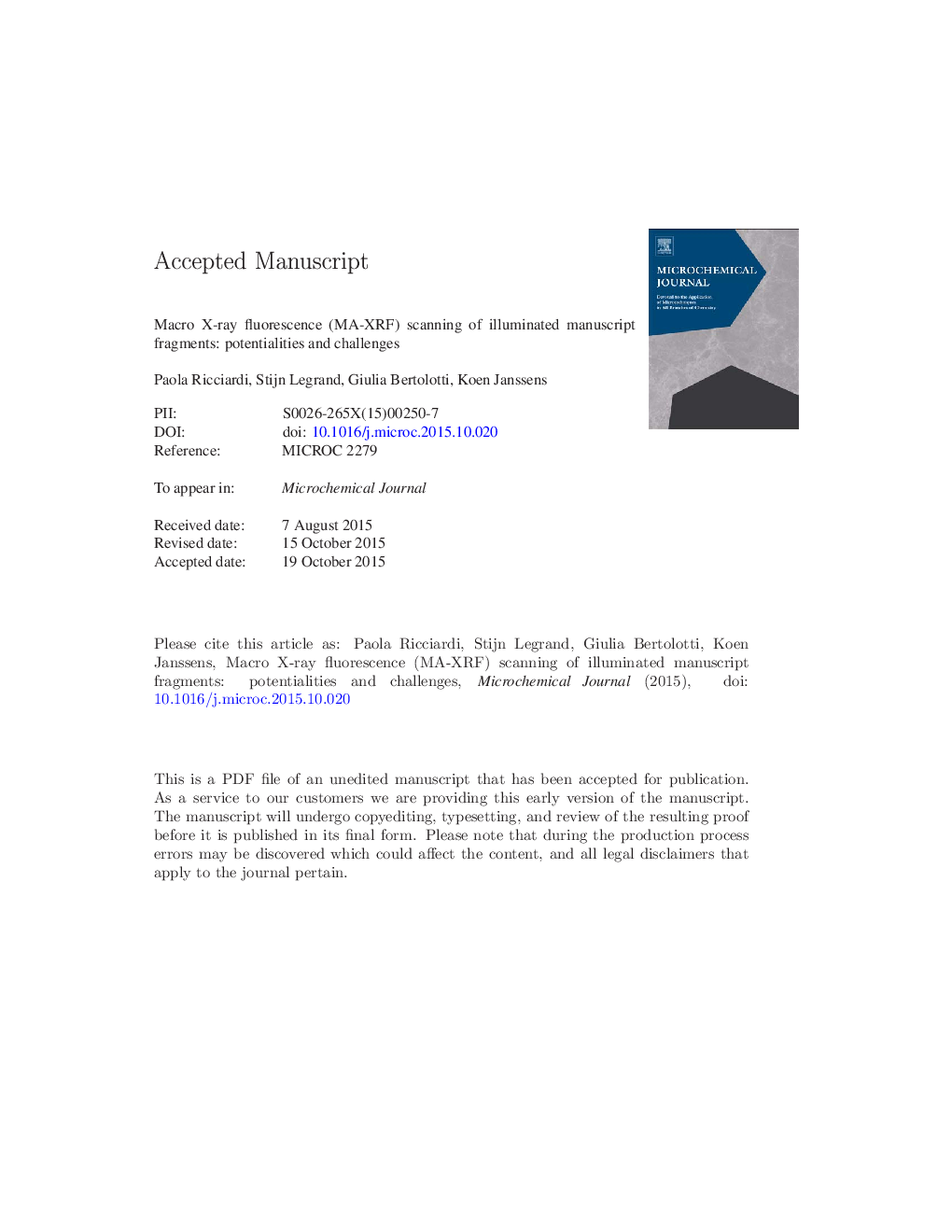| Article ID | Journal | Published Year | Pages | File Type |
|---|---|---|---|---|
| 7642559 | Microchemical Journal | 2016 | 23 Pages |
Abstract
Macro X-ray fluorescence scanning (MA-XRF) is gradually becoming an established technique for the non-invasive analytical investigation of painted surfaces. This paper discusses some of the benefits and limitations of employing MA-XRF for the study of manuscript illuminations. Art historical research on this type of artefacts that is based on scientific measurements is often limited by the fact that usually no sampling can take place. Hence there is a need for non-invasive analytical tools that make it possible to conduct systematic investigations. As a representative example of this type of objects, a 15th century Italian manuscript fragment from the collection of the Fitzwilliam Museum in Cambridge (UK) is investigated. The aims of the study were to gain insight into the materials and techniques employed by Renaissance illuminators and to help answer specific questions regarding the fragment's authorship and geographic origin. The complementarity and advantages of MA-XRF mapping versus site-specific analyses are discussed. For this purpose, MA-XRF data are evaluated and compared with the results of other analytical techniques. The interpretation of the elemental maps is discussed along with the challenges faced during the analysis.
Related Topics
Physical Sciences and Engineering
Chemistry
Analytical Chemistry
Authors
Paola Ricciardi, Stijn Legrand, Giulia Bertolotti, Koen Janssens,
